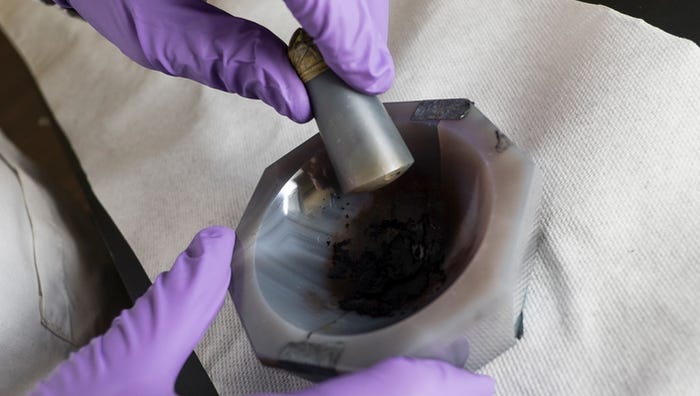Finding New Ways to Shape Graphene
July 8, 2015
Researchers are developing new techniques to shape graphene, and are exploring new ways to make use of the versatile material.
Kristopher Sturgis
|
Rice University researchers have developed a new simple technique that can turn carbon nanotubes into valuable graphene nanoribbons by literally grinding the nanotubes down. (Image courtesy of Rice University) |
Researchers have been able to do some amazing things with graphene lately, as they continue to exploit its unique properties in new ways. From grinding carbon nanotubes into graphene nanoribbons to forming 3-D shapes from flat 2-D shapes of graphene, advances continue amid efforts to integrate graphene into all kinds of technologies, including medical devices.
Graphene is a two-dimensional material roughly one atom thick. It contains some incredibly unique properties. As such, it's become a very promising material for researchers looking to integrate the material into exciting new technologies to enhance their performance.
One of the recent graphene developments came out of the University of Illinois at Urbana-Champaign, where researchers discovered a new approach to forming 3-D shapes using 2-D sheets of graphene, a technique that could lead to integrated systems of graphene microelectromechanical systems with hybrid devices and flexible electronics.
The Illinois researchers created different microstructured geometries--including pyramids, domes, pillars, inverted pyramids, and hybrid structures--out of gold nanoparticles and graphene. Researchers believe that these 3-D structures can enable intimate biosensing devices that can be conformed to the shape and characteristics of the human body and other biological systems.
In a similar vein to reshape graphene structures, researchers from Rice University have developed a new simple technique that can turn carbon nanotubes into valuable graphene nanoribbons by grinding the nanotubes down, enabling them to produce novel forms of nanostructured materials with specific properties. Mohamad Kabbani, a graduate student at Rice and lead author on the paper describing the work, thinks graphene's unique properties could make it a material of the future, medtech included.
"Graphene is a two-dimensional material that enjoys superb attributes," he said. "Most important among these is its conductivity that is not paralleled by any other type of material. Graphene is a very promising material that can be integrated into electronic devices, such as computers, to enhance their speed of performance by two orders of magnitude over the presently used silicon-based materials."
The graphene nanoribbons that Kabbani and his group created are thousands of times smaller than a human hair, and could soon find their way into composite materials, as they have the potential to boost the strength and electronic properties of a device. Kabbani noted that these unique properties could make graphene particularly useful in the realm of medtech devices.
"Many nanoparticles are being tested for one type of bioactivity or another," he said. "Graphene has a big specific area, and therefore its surface may be tested for combating bacteria and other microorganisms. One very important thing in nanotechnology is the art of the production of nanocomposites such as graphene/gold nanoparticles. Such composites will combine the medical advantages of both, and therefore enhance their medical use in areas such as cancer treatment."
Kabbani noted that their technique is the first solid-state method of unzipping carbon nanotubes that lead to graphene formation. The specifics of the method involve reacting two nanotubes carrying different functional groups in the solid state, under ambient temperature and pressure. And because this method is so smooth and avoids the use of harsh concentrated chemicals, the graphene that is produced contains no wrinkles, ripples, or other defects, making it a perfect candidate for use in technology.
While this research involved the collaboration of many researchers from different universities, and carried out on three different continents, the results continue to speak for themselves. As studies such as these continue to unravel the varying potentials of graphene, the research continues to open new avenues for different applications and technologies. Kabbani and his group hope that their nanoribbons can continue to push the envelope toward such enhanced technologies.
"There's no doubt we are moving in the direction of the nanotechnology revolution," Kabbani says. "Many achievements are being done at the technological, medical, and environmental levels. We hope that our graphene ribbons will lead to important developments in the near future of technology."
Refresh your medical device industry knowledge at MEDevice San Diego, September 1-2, 2015. |
Kristopher Sturgis is a contributor to Qmed and MPMN.
Like what you're reading? Subscribe to our daily e-newsletter.
About the Author(s)
You May Also Like



